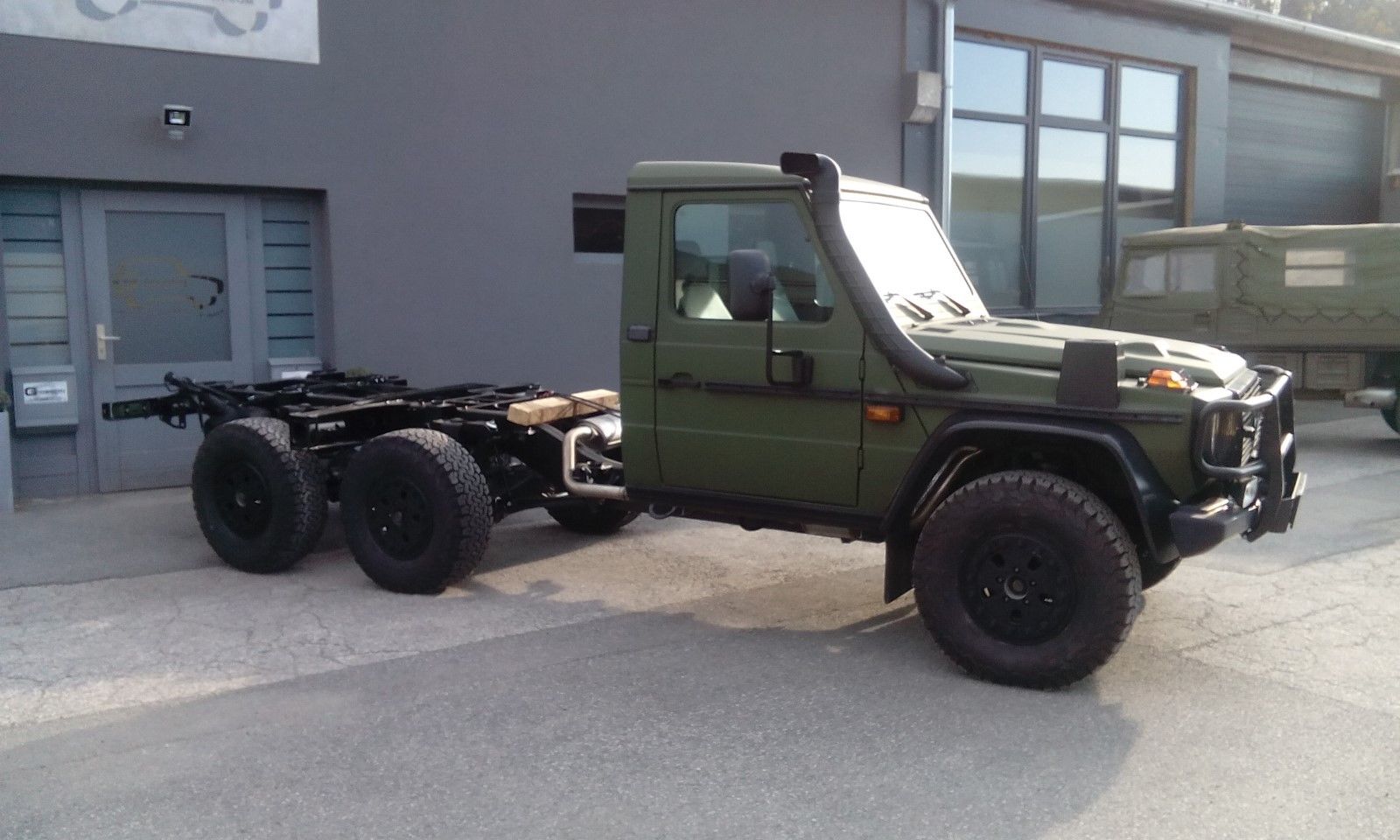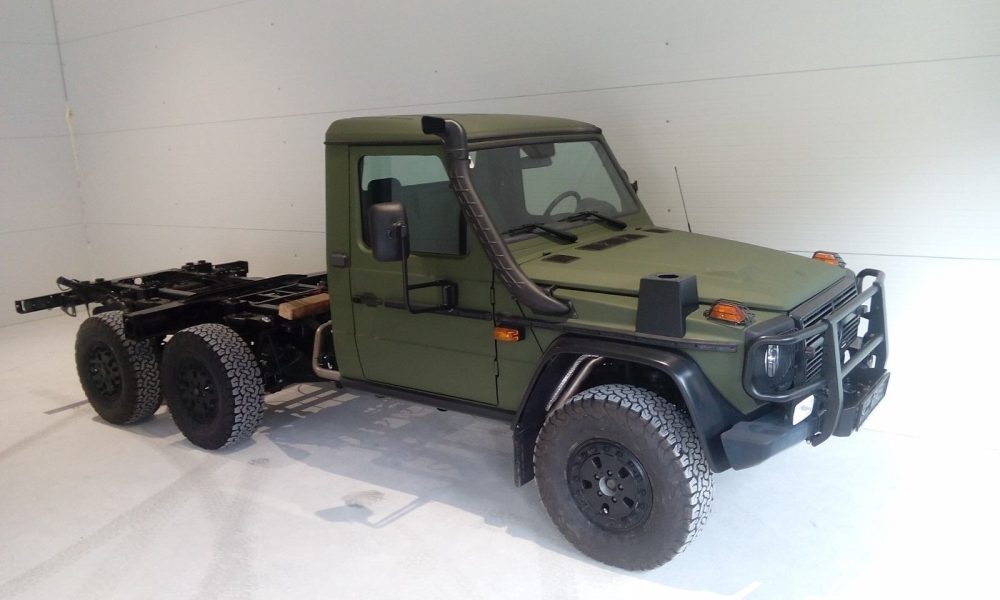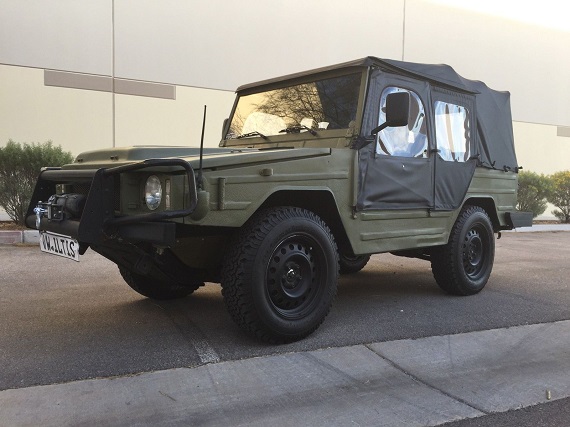I know what you are saying. ”Another G-Wagen?” Yes, but if you saw the title and looked at the photo you can understand why. This is a 2016 G300 CDI 6×6. Yes, a G300 CDI, which means this thing is powered by the 3.0 liter OM642 V6 diesel engine and of course, it is a 6×6, too. These special Gs are called the LAPV (Light Armored Patrol Vehicle) 6.1 used for military service for countries around the world. It doesn’t look like much now, but typically these are outfitted to look something like this or this. This 6×6 has also been upgraded with Beadlock 37-inch tires with a centralized pressure system in cab. Just for good measure, it is possible to tow a trailer weighing up to 4400 pounds. How much? It is a good thing militaries have large budgets.
Tag: military
The W461 Mercedes-Benz is a rare build of the G-Wagen that was dedicated for military and parapublic service. They are still as stripped down and basic as any…
1 CommentEarlier this week I looked at a ex-military Mercedes G-Wagen in a 1987 240GD. Today is another 1987 ex-military G-Wagen but this one is setup to…
Comments closedIf you are shopping for a Mercedes-Benz G-Wagen, you have a couple choices. Those choices range from the military-spec models with steel floors and 65…
Comments closedConventional enthusiast wisdom would say that if you want an older, sturdy German off-roader, you want a Mercedes-Benz G-Wagen. However, that stance completely ignores a very important vehicle in Audi and Volkswagen’s history – the Iltis. The story is multi-faceted, but it boils down to two different stories; Volkswagen’s need for a replacement for both the Type 181 (“Thing”) and DKM Munga, and the birth of the legendary Audi Quattro. In the late 1960s and early 1970s, Volkswagen consolidated the various Auto Union brands into a revised Audi lineup – the result of which was an opportunity to replace Mercedes-Benz as the German military vehicle supplier, a lucrative contract. To do so, Volkswagen built a new Type 183 vehicle using spare parts from the lineup of vehicles it now oversaw – the chassis was in large part based upon the earlier Munga, and the mechanical components based upon the Audi 100. The second story goes that in winter testing of some Audi and Volkswagen products, snow covered roads seemed to be the undoing of all but one of the lineup of cars brought along; the new Iltis simply left the other cars behind and impressed engineers Jorg Bensinger and Walter Treser (yes, that Treser), who theorized that the drive system could see road use. The result was the blueprint for the Audi Quattro that would debut in 1980, but not before Audi and Volkswagen won the Paris-Dakar Rally in 1980 with an Iltis. While the Quattro legend would take Audi to a whole new level in the 1980s, not much appreciation is given to the father of the Quattro – they’re rare to find for sale but offer a neat alternative to the normal off-roader:





